Ine Van Son’s work as a textile artist is in no way literal. It’s fascinating to hear her talk about how a piece will discover her rather than the other way round. It’s apparent from talking to her, that the methods and materials she uses are very much secondary to the essence of the story captured by the piece itself.
In this interview she elaborates on this concept and tells us more about her textile art installations, as well as some of her smaller pieces.
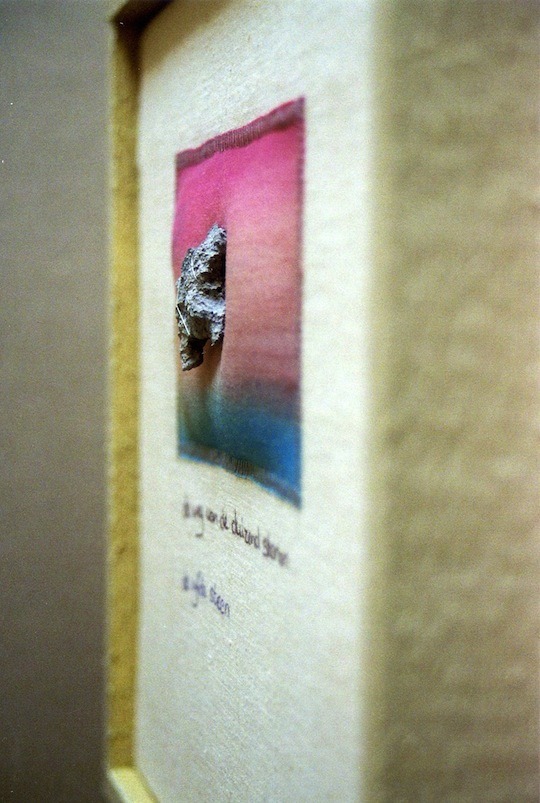
Show and tell
Why are you an artist?
I would like to start by saying that I am not good with words. If I was, I would be a writer. But I am not (although I am drawn to poetry). I want to express my response to things that I cannot see. That I cannot name.
But I discovered that I am able to “tell” in images. Or to “show” instead of “tell”. This made me realise that I am a visual artist. This gives the impression that it happened from one day to another. But it was a very slow process.
Who or what were your early influences and how has your life influenced your work?
Born in 1964, I grew up in a very humble family; my dad was an unskilled labourer, my mum a housewife. There was no luxury at all. But my parents encouraged us (my older sister and me) to get a good education. To make sure that we would be able to earn our own living. Not to be financially dependant on others. Becoming a visual artist was out of the question. How could you make a living from that?
When I try to go back to my very early memories, I see my mother knitting or sewing. She made many of our clothes herself. I was very much attracted to that and I started imitating her. Through my early years I knitted and crocheted incessantly.
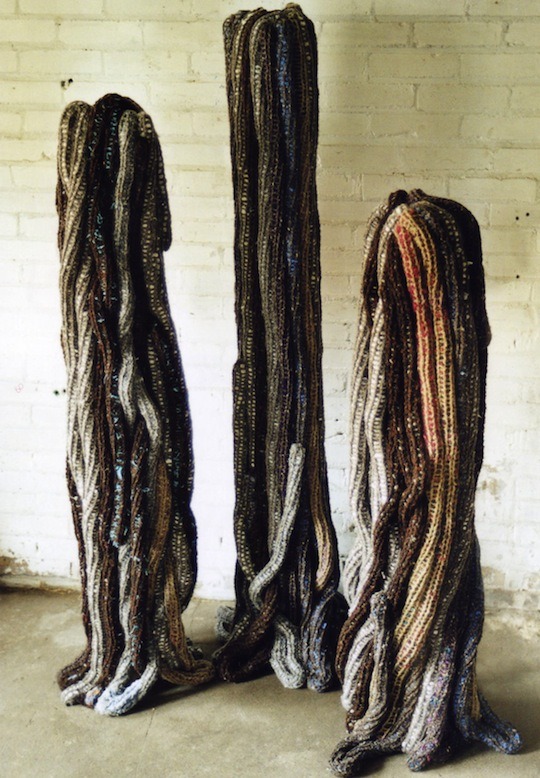
Not a desire but a need
What was your route to becoming a textile artist?
As a young adult, having to choose a professional training, I decided that I wanted to be a teacher. It seemed obvious that I would teach textile craft. So I did. I worked as a teacher for some time, then I wandered a bit through different professions which brought me new experiences and much happiness.
However, around the age of 30 I started asking myself if I wanted to continue living my life the way I had done until then. And I concluded that I didn’t. I decided that I wanted to go back to working with the material that I knew from my youth. But I did not want to be a craftsman (craftswoman). I wanted to express my experiences and motives. It was (and still is) not a desire but a need.
The motive behind my work arises from a need to express the un-visible and the un-nameable. To give a ‘body’ to the un-visible, which makes it manifest. To give an ‘image’ to the un-nameable, which makes it more comprehensible. Give a body to the universal human experiences, which makes them a little bit more tangible to us, lost souls. In 1999 I held my first solo-exhibition.
Through my work I would like people to dwell upon the beauty hiding in details that surround us. Upon the hidden meaning; the many things which are not visible but still are perceptibly present.
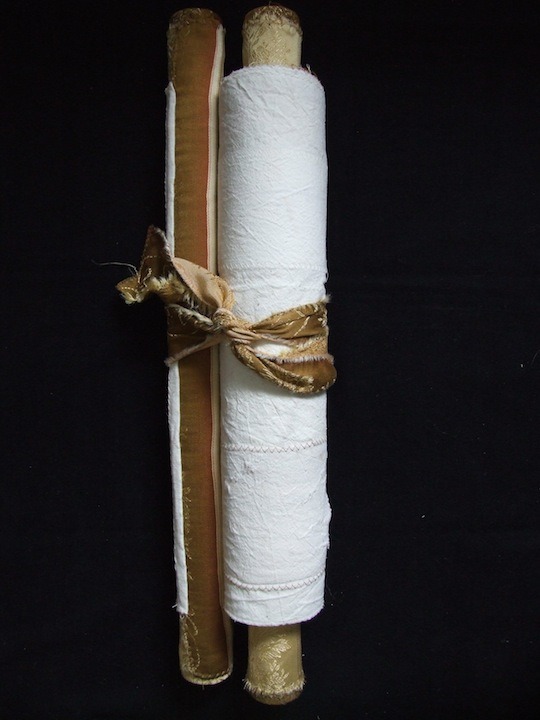
Carrying a story within
Why is textile art your chosen medium?
Often I use textiles as basic material; the material I grew up with. The material I saw my mother using. The material my grandmother used to work. And which for so many people carries so many associations.
I want to show images that carry a story within. That give a suggestion of the image behind that image, and the story that lies beneath. For every image I try to find the best fitting form of manifestation. Sometimes this results in (photo) collages and assemblages, other times textile is the most suitable medium.
Using textiles to create art is like “natural behaviour” to me. Some people grew up with parents painting or writing, I grew up with parents knitting, sewing (my mum) and cutting wood for the stove (my dad). So it seemed logical and natural to me to use those materials; they have been part of my life since I was a child. But that does not mean that using textile is the goal. It’s a medium, not the final purpose.
Do you use a sketchbook?
I never use a sketchbook. I work associatively: usually I start working when something pushes on me. That may be a colour, a form, a piece of material. Or an atmosphere, a memory. From that point, images arise that carry a story within. When I start working I have no idea what will come out. What wants to come out. I choose the material that seems to come the closest to the story or atmosphere that is calling to me.
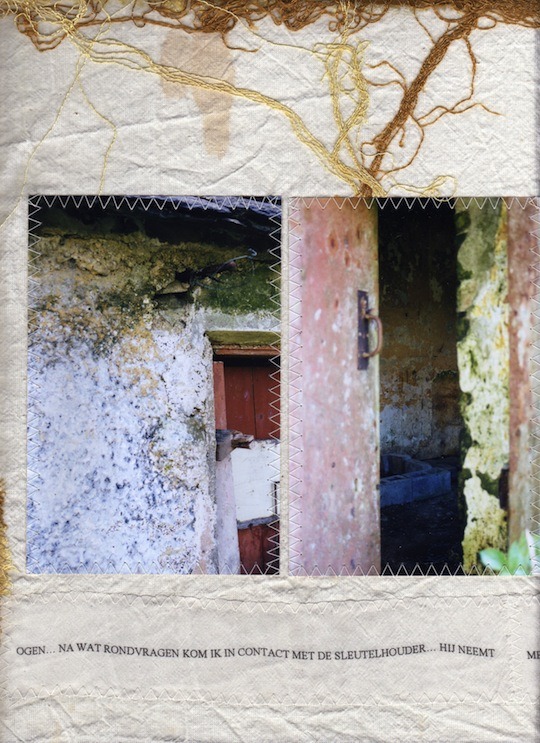
The ‘personality‘ of materials
What types of material do you like to use in your work?
I like to work with old materials. Old and used textiles, weathered timber, rusted metal. Because of the ‘personality’ of that material: it has already had a life before I came across it. And sometimes I just come across the material that needs to be integrated in the object that I am working on. It is as if the material finds me.
Tell us a bit about your techniques
I think my technical skills are quite well developed, but there is not one particular technique that I rely on. I use the techniques in the same way as the material; I use whatever is pushing to come out. And technique is, like material, a medium and not the purpose, not the goal.
What kind of atmosphere do you like to work in?
When I start working on a new project, I need quiet isolation and concentration. No distraction, no disturbance. When the first shapes of the object or installation start becoming clear, I just need to go on working. Still I need quiet isolation, but I find I can work in smaller chunks.
When, after some time, I have the impression that the object or installation is more or less in shape, I take some distance to look at what has been created. After that, I try to describe it with words. That way it gets more understandable, to me and to others.
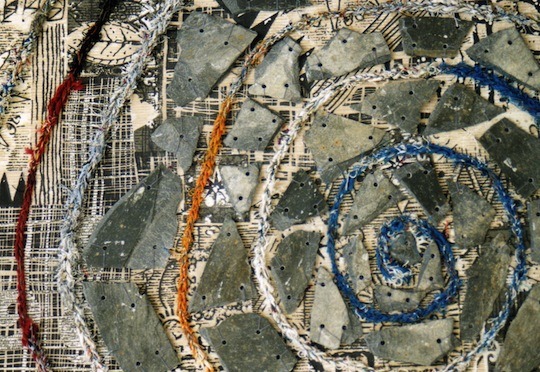
Inspired by history
What currently inspires you?
I am very much inspired by historic places. By that I do not mean museums or monuments. But places where a lot has happened before I visit. For example, I can get inspired when I dig out a piece of an earthen pipe-head or a piece of jewellery in my vegetable garden: I take it back into my workshop and it can sit there for quite some time. I study it and see if it has something to tell me. It may want to make its way into one of my creations.
Or I can be inspired by traces of a former presence found in nature. For example, I have spent quite some time in the west of Ireland. The stoney landscape there with all kinds of traces of earlier life has been a large influence on my work.
To capture the first impression of something which inspires me, I take photographs. Often I feel the need to have a more direct response to my first impression. That is why I sometimes make frottages (rubbings). It is a lovely, simple technique and I make them on paper or on textile. Often they come into my work together with photographs.
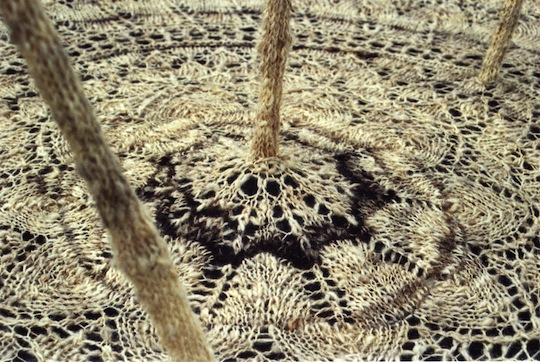
Outgrowing traditional textile techniques
How has your work developed?
When I first started making artwork, my objects were 2-dimensional. Sizes were quite large (around 1½ x 2 metres). But of course these took quite a long time to make…. So I started making smaller collages too. To hold, and to give a body to, transitory impressions.
Through the years I started putting together the collages into books and book-rolls made of textile or cardboard. To be able to show the images in an ongoing line in time as well as in space.
I also experiment with 3-dimensional forms, as in my Earth-flowers series.
Earth-flowers came to me by observing what happens to a piece of waste land: animals come and go, leave their droppings, tread down plants. The earth is turned up, new flowers appear from the earth, like from nowhere. Often in discrete colours, the most intriguing forms. To create the Earth-flowers, I used the fibers of sheep wool from my neighbour’s sheep, spun on my own spinning wheel. I also used fibers from home grown flax, and from jute, also home spun.
I felt the need to go back to the beginnings of the textile fibers. To stay close to the natural source. The colour and the rough fibers make the material look as if it comes directly from the earth, which actually is the case. The technique I employed was lace-knitting, using a pattern from the 19th century. From the Earth-flower grows peduncles: as if the Earth-flower wishes to outgrow its connection to the ground. This has personal connotations too; I myself wish to outgrow traditional textile techniques and create a new interpretation by going back to the origin, to where it all starts. By using rough material provided by animals and plants. By using the technique of lace-knitting in its most basic form.
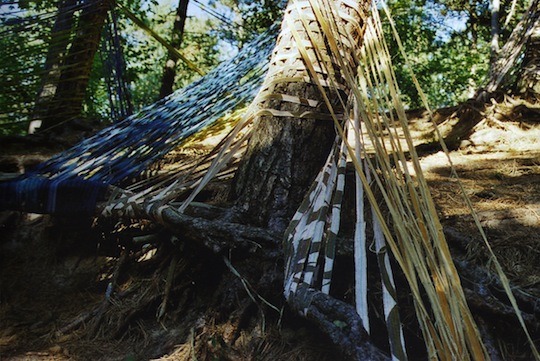
Textile art installations
Tell us a bit about your installation work
To express my impressions of a certain spot, a certain history or a certain experience I also make installations on commission for a specific site. This can be inside, but more often it is outside. The organizer of an exhibition might ask me to react to the circumstances of a specific place or site.
My work is a reaction to that place; what is on show and what is not. This reaction can be direct; a reaction to what appears there at present. Often it is a reaction to what has occured there in the past but is hardly visible anymore. To the way people tried to build a life there. Or to the remains I find of earlier lives, of people or animals.
The installation Princes d’Éternité was the first installation I created for an inside spot, and without commission. I am very proud that it was exhibited in the Museum for Natural History in Rotterdam (2008) under the title Gekooide Botten (Caged Bones).
At this moment I am working on two other installations for an inside environment. And I am looking for suitable places to exhibit them…
With the textile art installations, I think I have found the most suitable shape to express what I want to express; the installations occupy a large space. You can walk in it, around it, between the different elements. That way, while observing it, you enter it and become part of it; it surrounds you. And smell, sound, vision, atmosphere, temperature all come together and influence the way you experience the work.
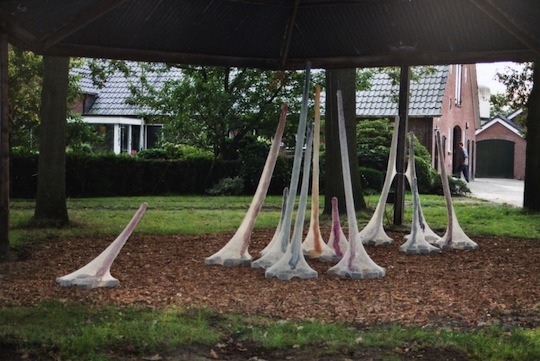
Which other artists do you admire?
Artists that inspire me often don’t use the same materials as I do. I think this re-inforces the idea that materials aren’t the most essential part of a piece of art; it is more about an essence. There is one textile artist who greatly inspired me when I was a student: Magdalena Abakanowicz. Her work is unusual within the sphere of textiles in that it is very large and imposing.
Seeing the work of Gerti Bierenbroodspot has been a big influence. When I came across the frottages and paintings she did in Petra, Palmyra and Baalbeck, I suddenly realised how an artist can reunite ancient and present times in her (or his) work. It is as if her work looms up from far away and long ago. Seeing this work inspired me to start using frottage in my work.
And of course there is the very impressive work of Anselm Kiefer. I am always intrigued by the way he integrates the earth itself in his work. Earth, seeds, string, wire, everything is there. As there is the history of the world. All in a piece. By the way, seeing the way he makes books inspired me to start making my books.
And last (but not least) a big source of inspiration I want to mention is Richard Long. The way he does interventions in the landscape, takes a photograph and then moves on. The title of one of his works: Walking a line through leaves along an eight day mountain walk in Sobaekan Korea 1993. Can art be more undressed and back to the essential than that?
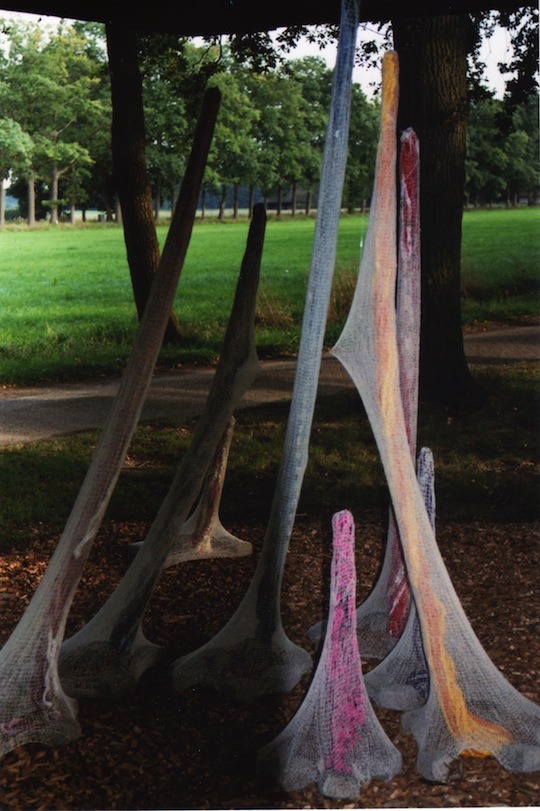
Where can readers see your work?
Until November 24 of this year (2013), some of my textile assemblages and my books are on show in Nibbixwoud (Netherlands). From May to December next year (2014) one of my Earth Flowers will be on show in the Cité internationale de la dentelle et de la mode (CIDM) in Calais (France).
My work can be viewed on my website; www.inevanson.exto.org (in English) or www.inevanson.exto.nl (in Dutch).
If people want to be kept up-to-date about my projects and exhibitions, they can send me an e-mail (ln.evil@nosnaveni) and I will put them on my mailing list.
If you’ve enjoyed our interview with Ine, let us know by leaving a comment below.
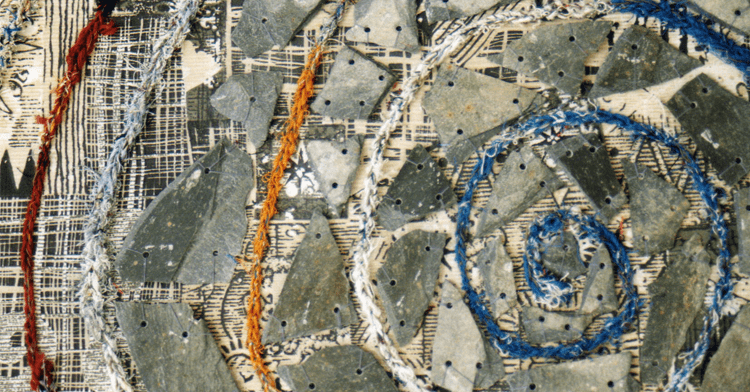

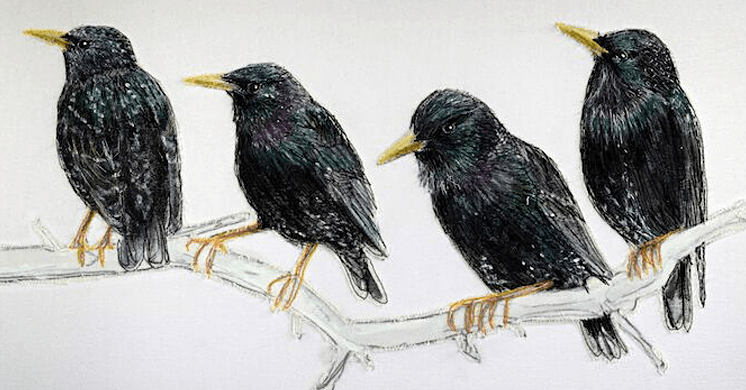
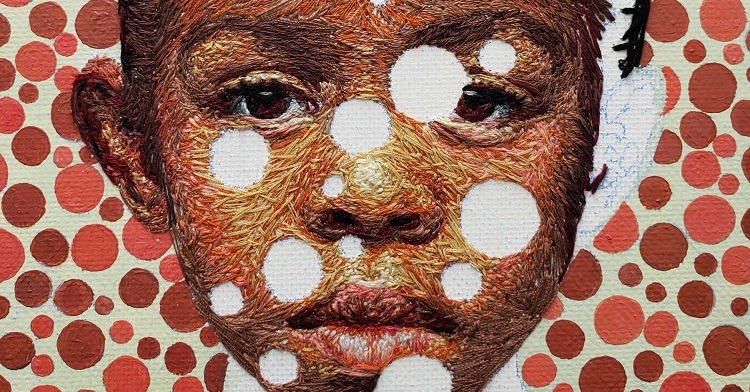
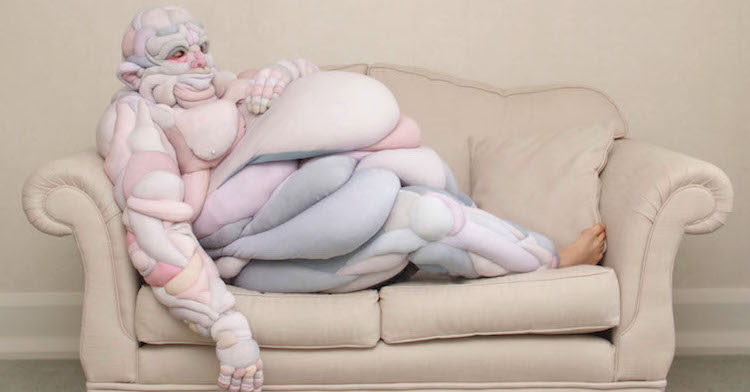
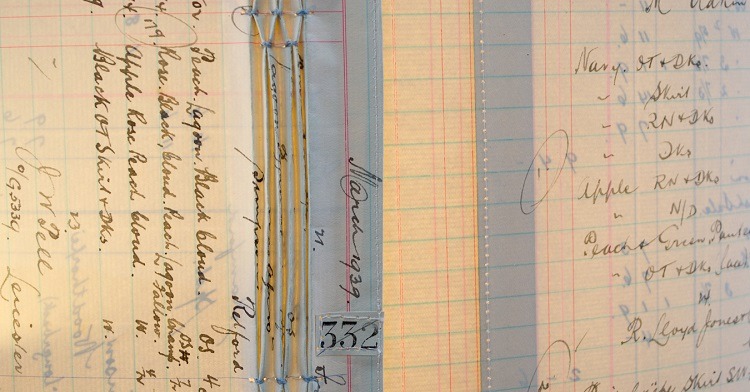
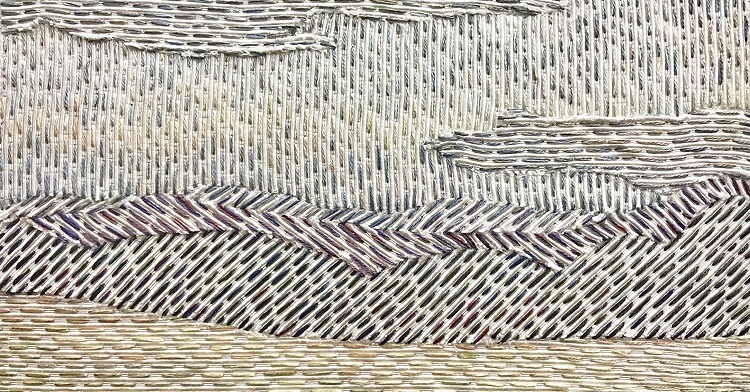
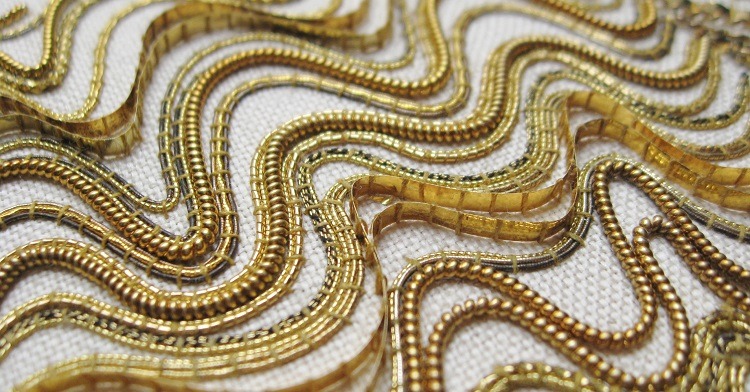
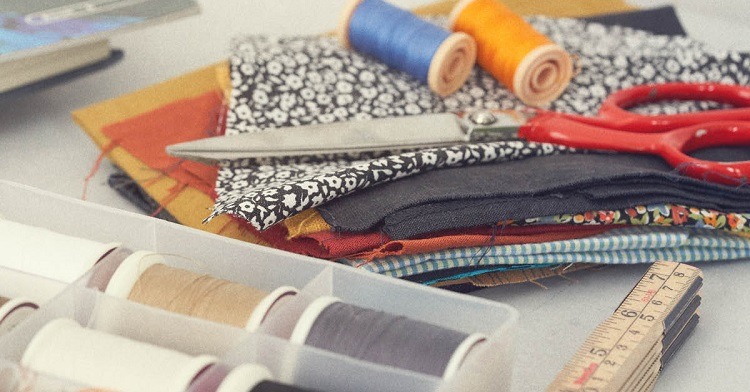
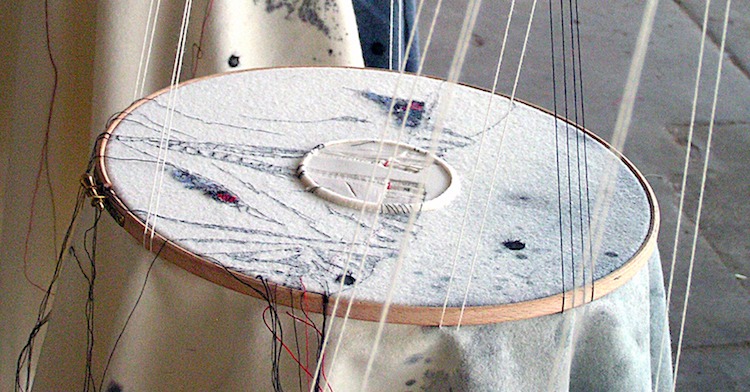
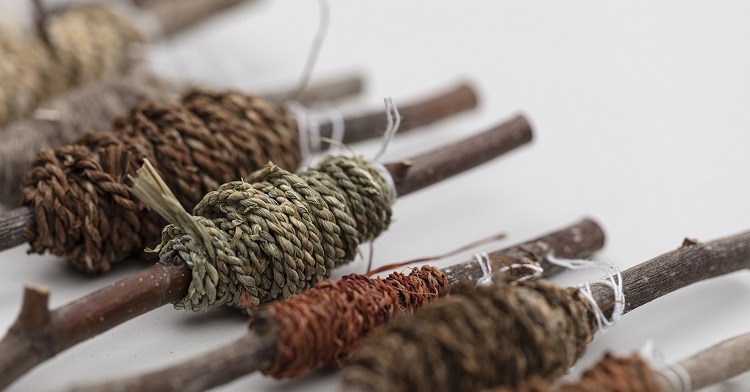
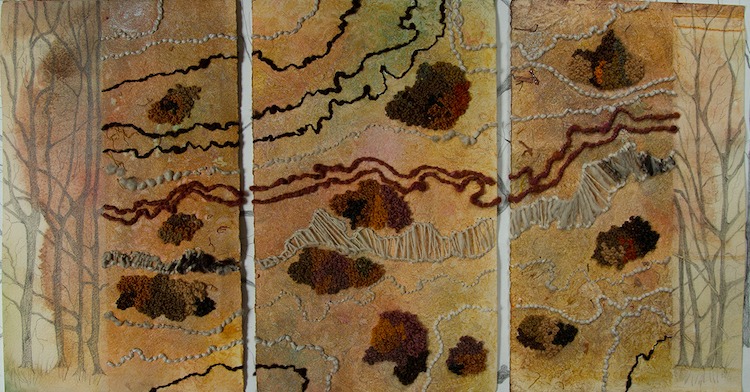
4 comments
Josie Taglienti
Sensitive thoughtful work ~ love the installations ~ I think this interview was most informative, honest, forthright.
I could hear you talking and feel your deep expressiveness ~ mentioning your home life and your
mother’s engagement in yarn and cloth ~ she is an artist as well, you know. If you examined your
father, he probably had some of it too. Even putting two wires together, or repairing a broken stool
has a creative bent. The fact that they did not move in the direction that you did;
different time, different perspective, different experience. They gave you the incubus to be who you are.
How very deeply you developed. I also am charmed by the way you present yourself, unaffected, allowing
the creative process to work its magic within you. I am so glad you are having recognition. I wish you Buona Fortuna in all you do ~ Thank you for alerting us to this interview. It was one of the best I have read in a long time.
Marta Fainberg
Fabulous work: creative, expressive, distinctive and personal! I also agree that the artist is excellent at expressing herself and inspiring others. I am curious as to how the outdoor installations, done in fibers, withstand the weather changes: rain, snow, wind, etc. Are they supposed to disintegrate?
Salley Mavor
As a someone who described themselves as not good with words, Ine Van Son has described her experience as an artist in a most compelling way. So much of what I hear from artists sounds like gobbledygook, but Ine’s writing expresses her methods and motivations so clearly. Thank you. I am inspired!
Ine van Son
“Where can readers see your work?” was the last question I was asked during this interview. At that moment it was not sure yet, but now I am very glad I can add this:
For “Ecofestival Landen” in “park Oeverlanden” in Amsterdam on 19 and 20 October 2013,
I will make the installation “Achtergelaten Berichten” (Messages left behind). I am very happy to make an installation again…..
More information can be found on their website http://www.ecofestivallanden.nl. And of course on my own website under ‘exhibitions’,